Chemistry A Quiz 3 Of 3
.webp)
- 1.
What is the electron configuration for an atom of germanium at ground state?
- A.
[Ar]4s2 3d10 4p2
- B.
[Ar]4s2 4d10 4p2
- C.
[Kr]4s2 3d10 4p2
- D.
[Kr]4s2 4d10 4p2
Correct Answer
A. [Ar]4s2 3d10 4p2Explanation
The electron configuration for an atom of germanium at ground state is [Ar]4s2 3d10 4p2. This means that germanium has a total of 32 electrons. The [Ar] represents the electron configuration of the noble gas argon, which has 18 electrons. The 4s orbital can hold up to 2 electrons, the 3d orbital can hold up to 10 electrons, and the 4p orbital can hold up to 6 electrons. Therefore, the electron configuration for germanium includes 2 electrons in the 4s orbital, 10 electrons in the 3d orbital, and 2 electrons in the 4p orbital.Rate this question:
-
- 2.
Which of the following correctly matches a compound with its molecular geometry?
- A.
Methane (CH4): tetrahedral
- B.
Water (H2O): linear
- C.
Carbon dioxide (CO ): tetrahedral 2
- D.
Ammonia (NH3): trigonal planar
Correct Answer
A. Methane (CH4): tetrahedralExplanation
The molecular geometry of methane (CH4) is tetrahedral because it has four bonded atoms and no lone pairs of electrons around the central carbon atom. In a tetrahedral geometry, the bonded atoms are arranged symmetrically around the central atom, forming a three-dimensional shape with bond angles of approximately 109.5 degrees.Rate this question:
-
- 3.
When zinc is exposed to air, zinc oxide is produced. What happens in this reaction?
- A.
Zinc is oxidized, and oxygen is reduced.
- B.
Zinc is reduced, and oxygen is oxidized.
- C.
Both zinc and oxygen are oxidized.
- D.
Both zinc and oxygen are reduced.
Correct Answer
A. Zinc is oxidized, and oxygen is reduced.Explanation
In this reaction, zinc is being oxidized because it is losing electrons to form zinc oxide. Oxygen, on the other hand, is being reduced because it is gaining electrons in the formation of zinc oxide. This is a classic example of a redox reaction, where one species is being oxidized and another is being reduced.Rate this question:
-
- 4.
How many molecules are in 0.500 mole of N2O5?
- A.
3.01×1023 molecules
- B.
1.20×1023 molecules
- C.
6.02×1023 molecules
- D.
3.01×1024 molecules
Correct Answer
A. 3.01×1023 moleculesExplanation
The correct answer is 3.01×1023 molecules. This is because 0.500 mole of N2O5 is equal to Avogadro's number (6.02×1023) multiplied by the given amount (0.500). Therefore, the number of molecules in 0.500 mole of N2O5 is 3.01×1023 molecules.Rate this question:
-
- 5.
Which of these statements is an accurate description of the ionization energies of elements in the periodic table?
- A.
The ionization energy of lithium is greater than that of potassium.
- B.
The ionization energy of iodine is greater than that of fluorine.
- C.
The ionization energy of magnesium is greater than that of sulfur.
- D.
The ionization energy of krypton is greater than that of neon.
Correct Answer
A. The ionization energy of lithium is greater than that of potassium.Explanation
The ionization energy refers to the energy required to remove an electron from an atom or ion. The trend in ionization energy across the periodic table generally increases from left to right and decreases from top to bottom. In this case, the statement "The ionization energy of lithium is greater than that of potassium" is accurate because lithium is located to the left of potassium in the periodic table and therefore has a higher ionization energy.Rate this question:
-
- 6.
Chemists can identify the composition of some unknown salts by conducting a flame test. When potassium salts are heated in a flame, a purple color is observed. This is due to the movement of electrons between energy levels. What is the electron configuration of a potassium atom at ground state?
- A.
1s22s22p63s23p64s1
- B.
1s22s22p63s23p64d1
- C.
1s22s22p63s23p63d1
- D.
1s22s22d63s23d64s1
Correct Answer
A. 1s22s22p63s23p64s1Explanation
The electron configuration of a potassium atom at ground state is 1s22s22p63s23p64s1. This configuration indicates that there are two electrons in the 1s orbital, two electrons in the 2s orbital, six electrons in the 2p orbital, two electrons in the 3s orbital, six electrons in the 3p orbital, and one electron in the 4s orbital. The movement of electrons between these energy levels is responsible for the observed purple color during a flame test.Rate this question:
-
- 7.
Which product balances the chemical equation below? 3AgNO3(aq) + FeCl3(aq) → 3AgCl(s) + ______________
- A.
Fe(NO3)3(aq)
- B.
FeCl(aq)
- C.
FeCl2(aq)
- D.
FeNO3(aq)
Correct Answer
A. Fe(NO3)3(aq)Explanation
The correct answer is Fe(NO3)3(aq) because it balances the chemical equation by providing the correct stoichiometric coefficient for Fe(NO3)3. This ensures that the number of atoms of each element on both sides of the equation is equal, satisfying the law of conservation of mass.Rate this question:
-
- 8.
As a distant star moves away from Earth, the light given off by the star has a measurably lower frequency. What happens to the wavelength and energy of the photons of light when the frequency becomes lower?
- A.
The wavelength becomes longer, and the energy decreases.
- B.
The wavelength becomes shorter, and the energy decreases.
- C.
The wavelength becomes longer, and the energy increases.
- D.
The wavelength becomes shorter, and the energy increases.
Correct Answer
A. The wavelength becomes longer, and the energy decreases.Explanation
As the frequency of light decreases, the wavelength becomes longer. This is because wavelength and frequency are inversely proportional to each other according to the wave equation. Additionally, the energy of a photon is directly proportional to its frequency. Therefore, when the frequency decreases, the energy of the photons of light also decreases.Rate this question:
-
- 9.
Which of the following includes an example of a chemical property of an element?
- A.
Aluminum is a solid at room temperature and is a poor thermal insulator
- B.
Sulfur is not shiny and is not malleable
- C.
Sodium is a solid at room temperature and reacts with other elements
- D.
Silicon is shiny and is a poor conductor of electricity
Correct Answer
C. Sodium is a solid at room temperature and reacts with other elementsExplanation
The correct answer is "Sodium is a solid at room temperature and reacts with other elements." This statement describes a chemical property of sodium, specifically its reactivity with other elements. Chemical properties refer to the behavior of a substance when it undergoes a chemical change or reaction. In this case, sodium's ability to react with other elements is a characteristic that distinguishes it from other elements and is therefore an example of a chemical property.Rate this question:
-
- 10.
- A.
F
- B.
G
- C.
H
- D.
J
Correct Answer
A. F -
- 11.
- A.
Volume
- B.
Mass
- C.
Boiling Point
- D.
Number of Moles
Correct Answer
C. Boiling Point -
- 12.
- A.
Sample W
- B.
Sample X
- C.
Sample Y
- D.
Sample Z
Correct Answer
C. Sample Y -
- 13.
In a famous experiment conducted by Ernest Rutherford, positively charged alpha particles were scattered by a thin gold foil. Which of the following is a conclusion that resulted from this experiment?
- A.
The nucleus is very small and the atom is mostly empty space.
- B.
The nucleus is negatively charged.
- C.
The atom is a dense solid and is indivisible.
- D.
The mass is conserved when atoms react chemically.
Correct Answer
A. The nucleus is very small and the atom is mostly empty space.Explanation
The correct conclusion that resulted from Ernest Rutherford's experiment is that the nucleus is very small and the atom is mostly empty space. This conclusion was drawn based on the observation that most of the alpha particles passed straight through the gold foil without any deflection, indicating that they were passing through the empty space within the atom. However, a small fraction of the alpha particles were deflected at large angles, suggesting the presence of a dense, positively charged nucleus at the center of the atom.Rate this question:
-
- 14.
- A.
A heterogenous mixture
- B.
An element
- C.
A compound
- D.
A homogenous mixture
Correct Answer
C. A compound -
- 15.
What is the volume of 2.00 moles of chlorine (Cl2) at STP, to the nearest tenth of a liter? STP = Standard Temperature and Pressure
Correct Answer
44.8Explanation
At STP, one mole of any gas occupies a volume of 22.4 liters. Since there are 2 moles of chlorine (Cl2), the volume would be 2 times 22.4 liters, which equals 44.8 liters.Rate this question:
- 16.
- A.
Liquid condenses on a cold glass rod when gas from the test tube on the left is released.
- B.
A gas probe indicates that the water in the beaker contains dissolved nitrogen and oxygen.
- C.
A burning wood splint placed above the mouth of the test tube on the right glows brighter when some gas is released from the test tube.
- D.
The temperature of the wire connected to the battery increases.
Correct Answer
C. A burning wood splint placed above the mouth of the test tube on the right glows brighter when some gas is released from the test tube. -
- 17.
- A.
Trihydrogen phosphite
- B.
Phosphoric acid
- C.
Phosphorous hydroxide
- D.
Phosphorous acid
Correct Answer
B. Phosphoric acid -
- 18.
- A.
Indium (In), because it has a slightly higher atomic mass than aluminum (Al), and tin (Sn), because it has a slightly higher atomic mass than silicon (Si)
- B.
Cadmium (Cd), because it has chemical properties similar to those of zinc (Zn), and mercury (Hg), because it has chemical properties similar to those of arsenic (As)
- C.
Antimony (Sb), because it has a slightly higher atomic mass than zinc (Zn), and bismuth (Bi), because it also has a higher atomic mass than zinc (Zn)
- D.
Gallium (Ga), because it has chemical properties similar to those of aluminum (Al), and germanium (Ge), because it has chemical properties similar to those of silicon (Si)
Correct Answer
D. Gallium (Ga), because it has chemical properties similar to those of aluminum (Al), and germanium (Ge), because it has chemical properties similar to those of silicon (Si) -
- 19.
Sodium, mercury, argon, and neon are used in the production of lamps. There are fewer safety guidelines regarding the handling of neon and argon than for mercury and sodium. Which of the following best describes the elements within the group of the periodic table that contains neon and argon gas?
- A.
Gaseous at room temperature and highly reactive with metals
- B.
Solid at room temperature and mildly reactive with strong acids
- C.
Gaseous at room temperature and mostly unreactive with metals
- D.
Solid at room temperature and mostly unreactive with strong acids
Correct Answer
C. Gaseous at room temperature and mostly unreactive with metalsExplanation
Neon and argon are both noble gases, which are gaseous at room temperature and highly unreactive with metals. This is because they have a full outer electron shell, making them stable and less likely to form chemical bonds with other elements. Therefore, the correct answer is "Gaseous at room temperature and mostly unreactive with metals."Rate this question:
-
- 20.
What is the percentage by mass of sodium (Na) in a formula unit of sodium hydrogen carbonate (NaHCO3)?
- A.
44.2%
- B.
37.7%
- C.
27.4%
- D.
16.7%
Correct Answer
C. 27.4%Explanation
In a formula unit of sodium hydrogen carbonate (NaHCO3), there is one sodium atom (Na) present. The molar mass of sodium is 22.99 g/mol. The molar mass of NaHCO3 is 84.01 g/mol. To find the percentage by mass of sodium, we divide the molar mass of sodium by the molar mass of NaHCO3 and multiply by 100. Therefore, the percentage by mass of sodium in NaHCO3 is 27.4%.Rate this question:
-
- 21.
How many atoms are present in 179.0 g of iridium?
- A.
5.606×10^23 atoms
- B.
6.464×10^23 atoms
- C.
1.078 × 10^26 atoms
- D.
1.157×10^26 atoms
Correct Answer
A. 5.606×10^23 atomsExplanation
The correct answer is 5.606×10^23 atoms. This is because the question is asking for the number of atoms present in a given mass of iridium. To find this, we need to use the concept of molar mass and Avogadro's number. The molar mass of iridium is 192.22 g/mol. We can calculate the number of moles of iridium in 179.0 g by dividing the mass by the molar mass, which gives us 0.930 moles. Then, we can use Avogadro's number (6.022×10^23 atoms/mol) to convert moles to atoms, which gives us 5.606×10^23 atoms.Rate this question:
-
- 22.
X-ray crystallography is a technique that allows scientists to determine the ionic and atomic radii of elements. Which of these statements correctly describes a trend in ionic or atomic radii in the periodic table?
- A.
The ionic radius decreases from top to bottom in a group.
- B.
The atomic radius increases from left to right across a period.
- C.
The ionic radius remains constant from right to left across a period.
- D.
The atomic radius increases from top to bottom in a group.
Correct Answer
D. The atomic radius increases from top to bottom in a group.Explanation
The atomic radius increases from top to bottom in a group because as you move down a group, the number of energy levels or electron shells increases. This means that the outermost electrons are further away from the nucleus, resulting in a larger atomic radius.Rate this question:
-
- 23.
- A.
A
- B.
B
- C.
C
- D.
D
Correct Answer
C. C -
- 24.
- A.
It is a pure substance because solid particles cannot pass through the filter paper.
- B.
It is a pure substance because the river water is composed only of free elements.
- C.
It is a mixture because dissolved ions in the water pass through the filter paper.
- D.
It is a mixture because solid particles are separated from the river water.
Correct Answer
D. It is a mixture because solid particles are separated from the river water. -
- 25.
Which of the following best explains why CO2 gas is easily compressible but solid CO2 (dry ice) is incompressible?
- A.
The molecules of CO2 gas are much closer together than the molecules in dry ice.
- B.
The molecules of solid CO2 are much closer together than the molecules of CO2 gas.
- C.
The molecules of CO2 gas are much smaller than the molecules of solid CO2.
- D.
The molecules of CO2 gas attract one another, while the molecules of the solid CO2 repel one another.
Correct Answer
B. The molecules of solid CO2 are much closer together than the molecules of CO2 gas.Explanation
The explanation for the given answer is that the molecules of solid CO2 are much closer together than the molecules of CO2 gas. In a solid state, the molecules are tightly packed and have limited freedom of movement, which makes it difficult to compress the solid CO2. On the other hand, in a gaseous state, the molecules are more spread out and have more space between them, allowing for easier compression. Therefore, solid CO2 is considered to be incompressible compared to CO2 gas.Rate this question:
-
- 26.
What is the formula of the ion hydrogen sulfite, which has a charge of −1?
- A.
SO3 −1
- B.
SO4−1
- C.
HSO3−1
- D.
HSO4−1
Correct Answer
C. HSO3−1Explanation
The formula of the ion hydrogen sulfite, which has a charge of -1, is HSO3-1.Rate this question:
-
- 27.
What is the chemical formula for disulfur decafluoride?
- A.
S10F2
- B.
S3F9
- C.
S2F10
- D.
S2F8
Correct Answer
C. S2F10Explanation
Disulfur decafluoride is a compound composed of two sulfur atoms and ten fluorine atoms. Therefore, the chemical formula for disulfur decafluoride is S2F10.Rate this question:
-
Quiz Review Timeline +
Our quizzes are rigorously reviewed, monitored and continuously updated by our expert board to maintain accuracy, relevance, and timeliness.
-
Current Version
-
Nov 09, 2023Quiz Edited by
ProProfs Editorial Team -
Feb 19, 2014Quiz Created by
Kevin L.
- Aeronautics Quizzes
- Aerospace Quizzes
- Agricultural Science Quizzes
- Astrology Quizzes
- Astronomy Quizzes
- Atom Quizzes
- Biochemistry Quizzes
- Biology Quizzes
- Biomechanics Quizzes
- Biostatistics Quizzes
- Biotechnology Quizzes
- Botany Quizzes
- Branches Of Science Quizzes
- Cytology Quizzes
- Easy Science Quizzes
- Ecology Quizzes
- Electrical Quizzes
- Embryology Quizzes
- Endocrinology Quizzes
- Engineering Quizzes
- Environmental Science Quizzes
- Epidemiology Quizzes
- Experiment Quizzes
- Forestry Quizzes
- Fossil Quizzes
- Gas Quizzes
- General Science Quizzes
- Genetics Quizzes
- Histology Quizzes
- Human Biology Quizzes
- Integrated Science Quizzes
- Invention Quizzes
- Library Science Quizzes
- Lighting Quizzes
- Liquid Quizzes
- Marine Biology Quizzes
- Microbiology Quizzes
- Molecular Biology Quizzes
- Nature Quizzes
- Neuroscience Quizzes
- Nuclear Science Quizzes
- Oceanography Quizzes
- Physics Quizzes
- Psychology Quizzes
- Science And Technology Quizzes
- Science Glossary Quizzes
- Science Knowledge Quizzes
- Science Practice Quizzes
- Scientific Method Quizzes
- Scientific Notation Quizzes
- Soil Science Quizzes
- Solar System Quizzes
- Solid Quizzes
- Zoology Quizzes
 Back to top
Back to top



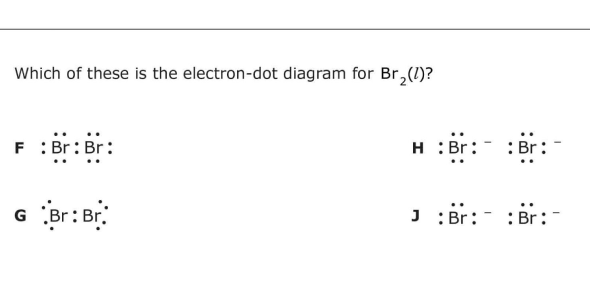


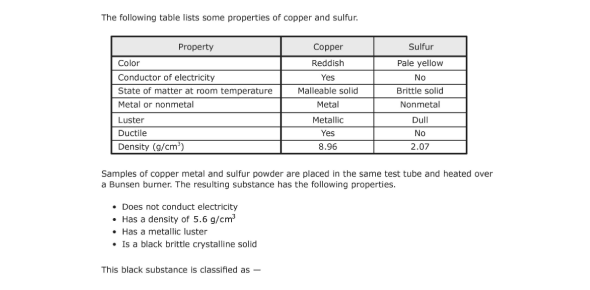
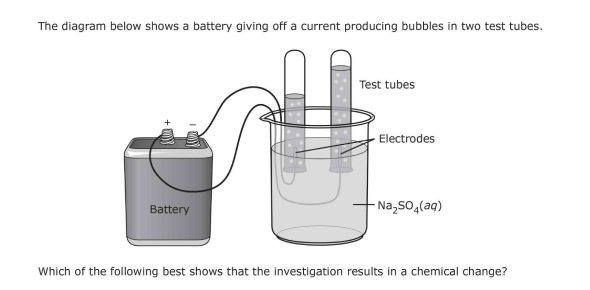
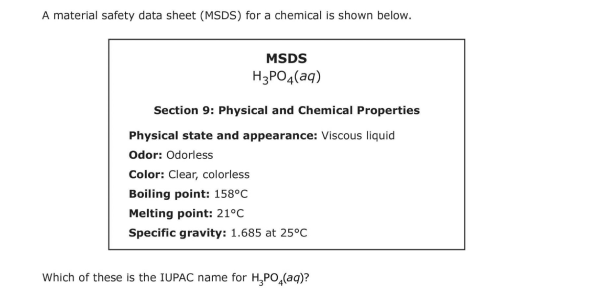
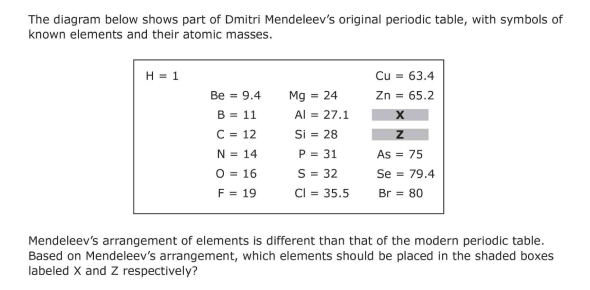
.webp)
